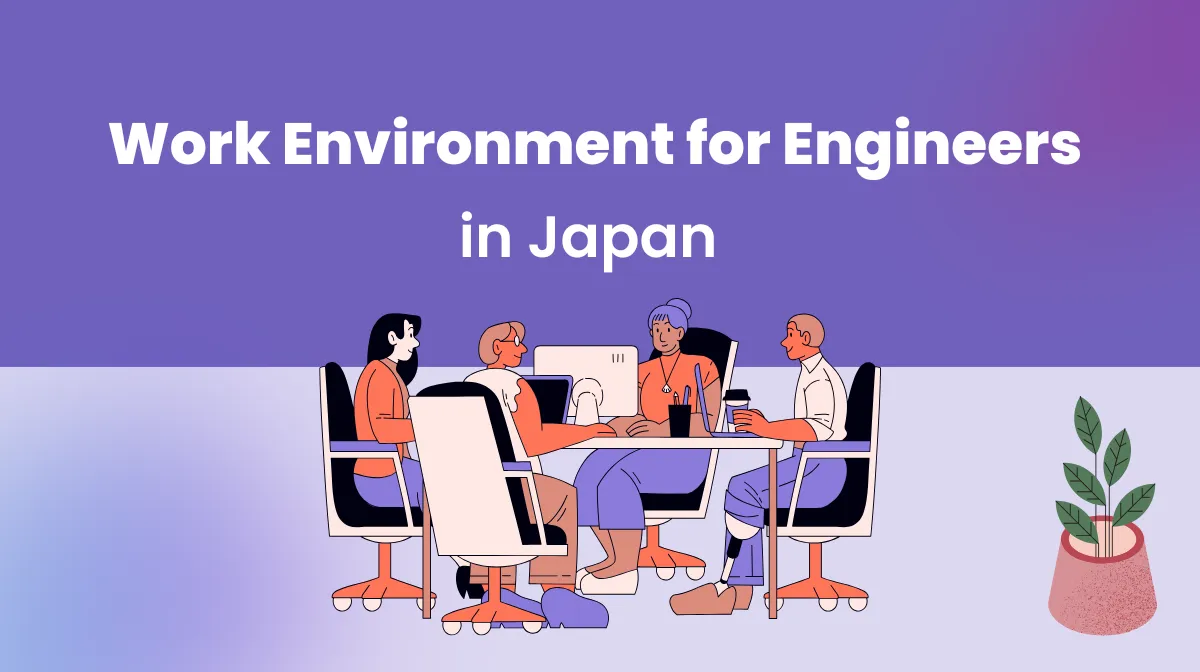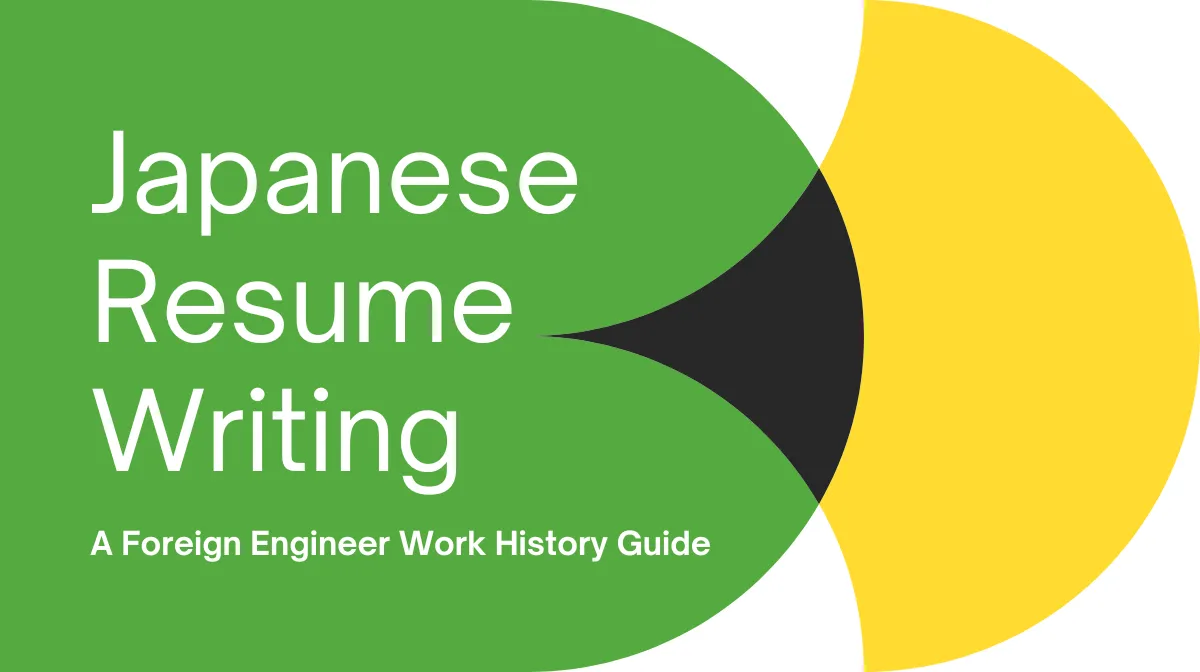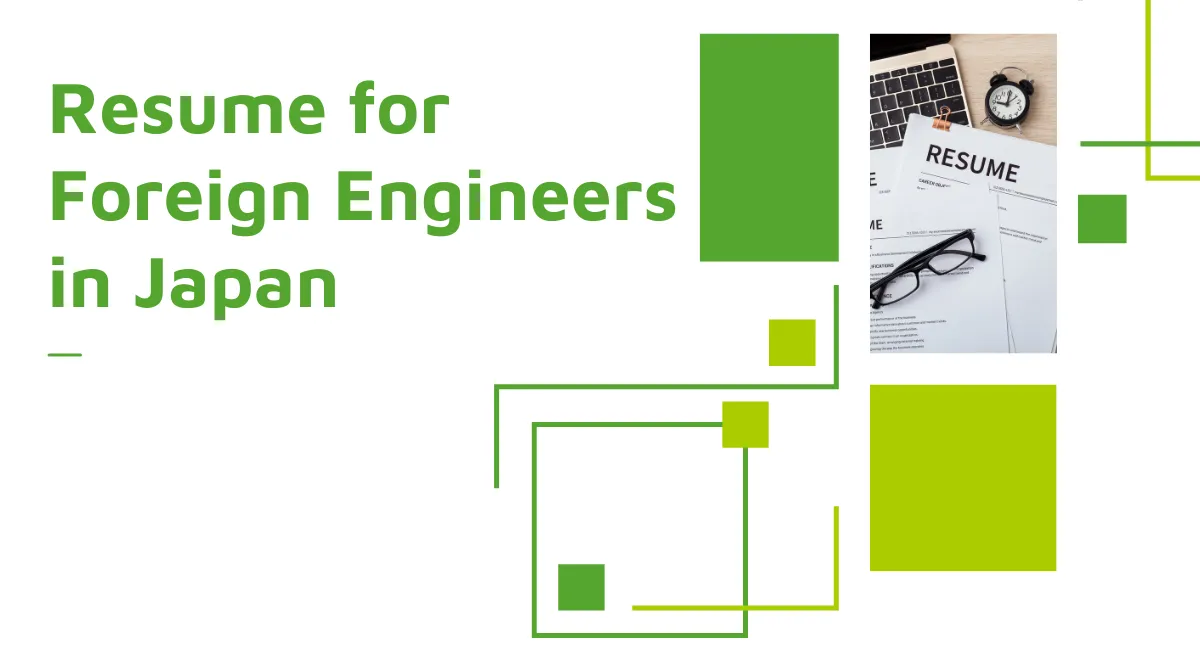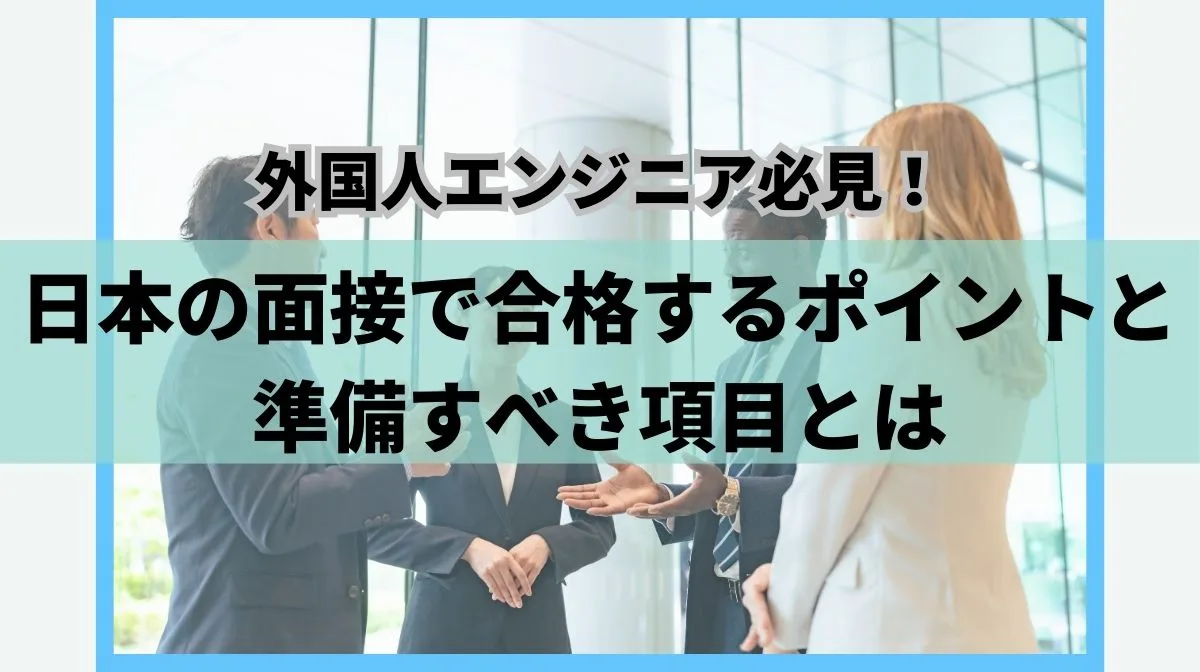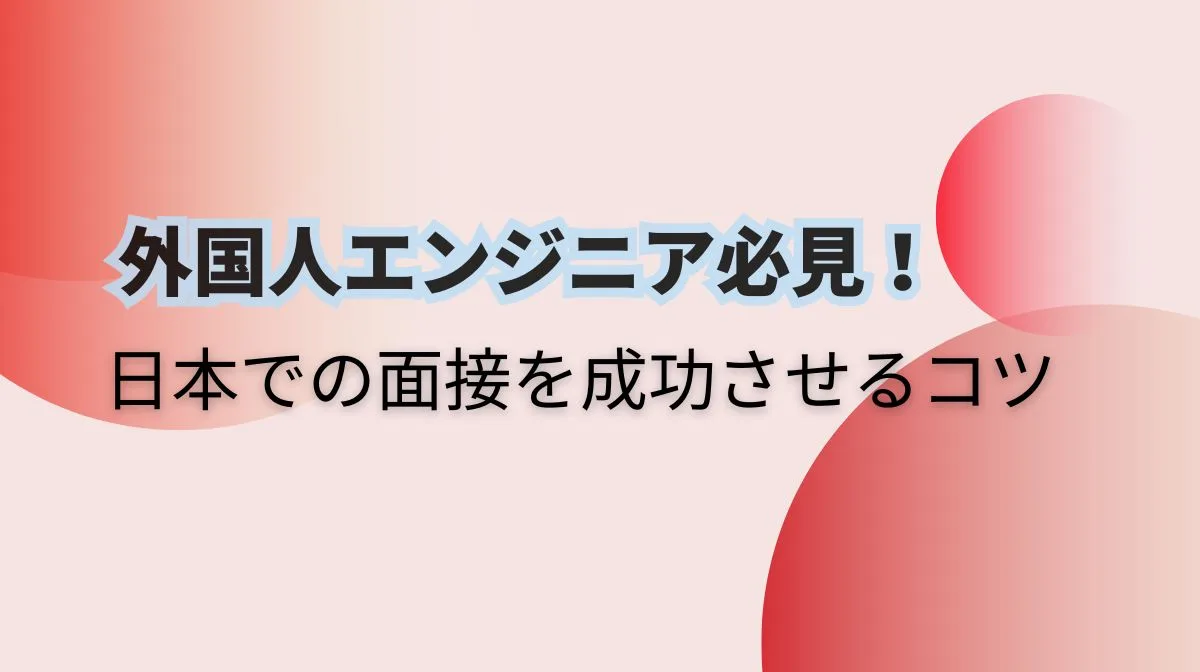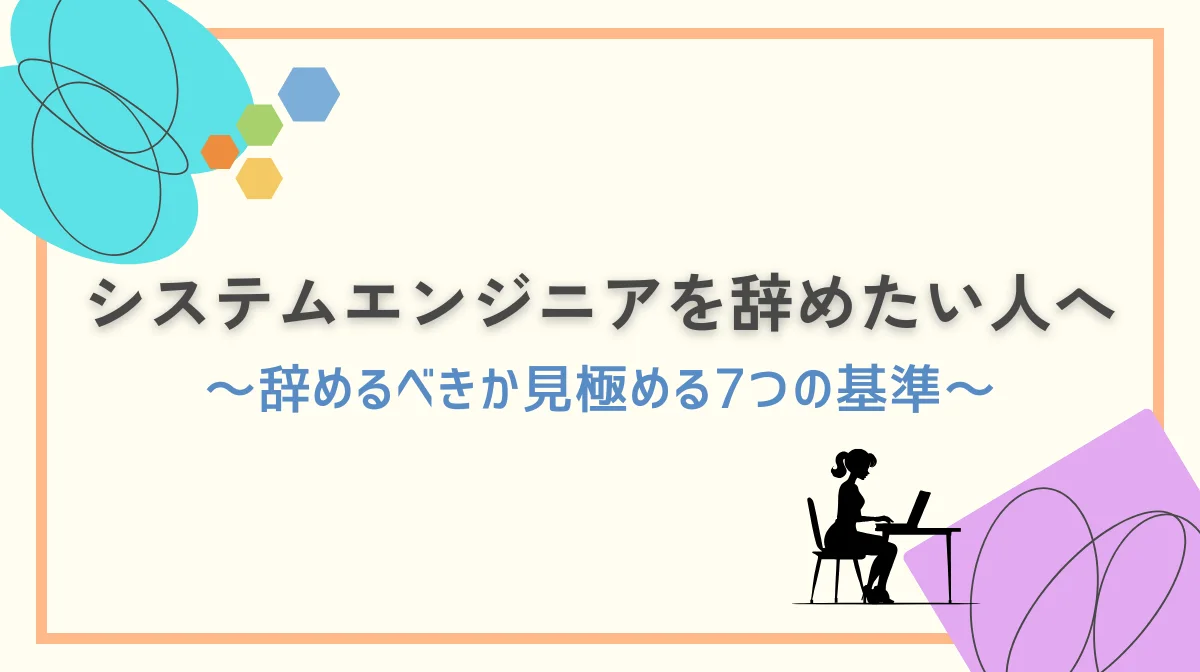The work environment for engineers in Japan has characteristics that differ somewhat from global standards.
While there are benefits such as a team-oriented culture, long-term career development, and stability, there are also challenges including work style reforms and adaptation to global competition.
In this article, we will explore in detail the characteristics and realities of the work environment for engineers in Japan.
- Japan’s team-oriented engineering workplace culture.
- Benefits of Japanese engineering environments.
- Challenges and future trends in Japanese workplaces.
1. Current State of the Engineering Work Environment in Japan

The work environment for engineers in Japan combines unique characteristics and challenges. While high technical skills and innovation are required, it also reflects Japan’s distinctive corporate culture and work style.
Japan’s Unique Organizational Culture and Team Structure
The organizational culture and team structure in Japanese engineering workplaces emphasize team achievements over individual accomplishments.
A collaborative approach focused on the success of the entire project is adopted, and close communication between team members is highly valued.
Additionally, job rotation systems are utilized to provide opportunities to experience various roles and develop comprehensive skills. In the decision-making process, bottom-up proposals and consensus-building are characteristic. There is a tendency to prioritize gathering opinions from the field level and aim for unanimous agreement.
Furthermore, there is a step-by-step approval process that goes through verification and approval by multiple layers, ensuring thorough risk management.
Evaluation Systems and Promotion Mechanisms
In Japanese companies, evaluations are comprehensive and consider factors beyond technical skills.
Important evaluation elements include
Contribution to the team • Communication skills • Project management ability • Continuous learning motivation • Adaptability to the organization • Long-term growth potential, etc.
Career paths often contain elements of seniority-based progression, with gradual promotions based on years of experience being common.
Technical specialist career tracks are also established, providing growth opportunities along both management and technical axes.
It can be said that Japanese workplaces have developed uniquely, balancing stability and growth opportunities while being rooted in Japanese corporate culture.
2. How Japan’s Engineering Work Environment Differs from Overseas

The work environment for engineers in Japan has characteristics that differ from global standards. Understanding these differences is an important factor when making career choices.
Differences in Decision-Making During Project Progression
Japanese companies emphasize thorough advance planning and preparation, with a step-by-step decision-making process that prioritizes overall consensus.
A cautious approach focusing on risk avoidance is often taken, which differs from the rapid decision-making and emphasis on individual discretion found in overseas companies.
While a culture that tolerates trial and error is more common overseas, Japan tends to have a stronger inclination toward perfection.
Differences in Required Skill Sets
Japanese companies often emphasize versatile skill sets, with gradual skill acquisition through in-house education being common.
Roles within teams often change flexibly, which differs from the tendency of overseas companies to seek specialized technical skills that can be immediately effective.
While establishing clear areas of specialization is valued overseas, Japan demands broad knowledge and adaptability.
Perspectives on Work-Life Balance
In Japanese workplaces, work arrangements that consider team schedules are common, and an implicit overtime culture is also characteristic.
There is a tendency to value workplace community, which differs from the clear separation of working hours and prioritization of private life seen in overseas companies.
While time management for individuals is emphasized overseas, team harmony is often prioritized in Japan. However, in recent years, the reconsideration of work-life balance and the consciousness and awareness of valuing private life have been increasing.
■日本でエンジニアとしてキャリアアップしたい方へ
海外エンジニア転職支援サービス『 Bloomtech Career 』にご相談ください。「英語OK」「ビザサポートあり」「高年収企業」など、外国人エンジニア向けの求人を多数掲載。専任のキャリアアドバイザーが、あなたのスキル・希望に合った最適な日本企業をご紹介します。
▼簡単・無料!30秒で登録完了!まずはお気軽にご連絡ください!
Bloomtech Careerに無料相談してみる
3. Benefits of the Engineering Work Environment in Japan

The engineering work environment in Japan has its own strengths and attractions. The benefits described below are important elements when considering long-term career development.
Comprehensive Education Systems and Thorough Support
Japanese corporate education systems are known for providing consistent support from newcomers to veterans.
Through systematic technical training programs, they support step-by-step skill improvement and provide practical technical training.
Additionally, mentoring systems are utilized to support individual growth.
Regular in-house study sessions, support for participation in external training, and backing for qualification acquisition are also characteristic of the wide range of learning opportunities provided.
The comprehensive educational support systems adopted by many companies serve as an important foundation supporting the continuous growth of engineers.
Ease of Long-Term Career Development
Planned skill development can also be cited as a benefit in Japanese companies.
Opportunities to experience multiple technical fields are provided, and project management skills can be naturally acquired as responsibility gradually expands.
Career path options are also abundant, with various possibilities open including paths to technical specialist positions, transitions to management positions, and roles in new business development.
Relatively Stable Employment Environment
A major characteristic of the Japanese work environment is stable employment conditions.
Although decreasing, the practice of lifetime employment still exists, along with comprehensive welfare benefits and consideration for work-life balance.
The environment is set up so that engineers can focus on long-term technical skill improvement, secure continuous income, and easily plan for the future.
4. Challenges in Japan’s Engineering Work Environment

Japan’s engineering work environment faces various challenges with the acceleration of globalization and technological innovation. Recognizing these challenges and responding appropriately is essential for the future development of Japan’s IT industry.
Response to Overtime and Work Style Reforms
Amid advancing work style reforms, balancing project deadlines and time management has become a major challenge.
Responding to implicit expectations of overtime and improving team-wide work efficiency are required, while adaptation to new work styles such as effective use of flextime systems and establishment of remote work systems is also needed.
In particular, efforts to improve productivity are expected to become increasingly important in the future.
International Competitiveness of Salary Levels and Evaluation Systems
Regarding competitiveness in the global market, international disparities in salary levels have become apparent. Establishing compensation systems commensurate with technical skills and introducing performance-based evaluations have become challenges.
In evaluation systems too, ensuring objectivity in skill assessment, introducing internationally applicable evaluation criteria, and achieving treatment that reflects market value are required.
Balance Between Specialization and Job Rotation
A major challenge in career development is balancing technical skill improvement in specific fields with acquiring technical skills that meet global standards.
As keeping up with the latest technologies is required, it is necessary to balance appropriate implementation of job rotation with ensuring specialization.
Presenting clear career paths and establishing development policies accordingly are also important challenges.
■日本でエンジニアとしてキャリアアップしたい方へ
海外エンジニア転職支援サービス『 Bloomtech Career 』にご相談ください。「英語OK」「ビザサポートあり」「高年収企業」など、外国人エンジニア向けの求人を多数掲載。専任のキャリアアドバイザーが、あなたのスキル・希望に合った最適な日本企業をご紹介します。
▼簡単・無料!30秒で登録完了!まずはお気軽にご連絡ください!
Bloomtech Careerに無料相談してみる
5. Future Prospects for the Engineering Work Environment

With the evolution of technology and acceleration of globalization, Japan’s engineering work environment is at a major turning point. Let’s look at the expected changes and prospects.
Remote Work and Diversification of Work Styles
The diversification of work styles is progressing rapidly, particularly with the establishment and evolution of remote work becoming prominent.
As hybrid work becomes standardized and virtual communication is enhanced, there is also a shift towards performance-based evaluations.
Additionally, flexible work arrangements are expanding with the spread of flextime systems and acceptance of side jobs and concurrent employment, promoting the realization of work-life integration.
Response to Globalization and Changes
To strengthen international competitiveness, efforts are being made to improve technical skills to global standards, emphasize English communication skills, and introduce international evaluation criteria.
Major transformations are also occurring in organizational culture
- Promotion of diversity and inclusion
- Transition to flat organizational structures
- Promotion of open innovation, etc.
In particular, rapid response to technological innovation is required, including active introduction of AI and automation technologies, full-scale deployment of agile development, and development of continuous learning environments.
In human resource development as well, new initiatives are being deployed, such as strengthening the development of global talent, emphasizing specialization and creativity, and supporting autonomous career development.
6. Points for Selecting an Ideal Work Environment

To select an ideal work environment as an engineer, an approach from both self-analysis and company research is important.
Self-Analysis and Clarification of Priorities
It is important to clarify your career vision.
Setting short-term, medium-term, and long-term goals, determining the direction of technical specialization, and deciding on work style priorities are necessary.
It is also important to organize your values, such as treatment conditions you prioritize, desired corporate culture, and ideal work-life balance.
Company Research and Cultural Fit
In choosing a company, it is important to check the technical environment, including the technology stack used, attitude toward technology investment, and characteristics of the development process.
Understanding the organizational culture, including management style, career development support systems, team composition, and collaboration style, is also necessary.
You should also check the freedom in work style
- Clarity of evaluation criteria
- Existence of career paths
- Level of salary and treatment, etc. related to evaluation systems and compensation
- Flexibility in working hours
- Remote work policies
- Possibility of side jobs and concurrent employment, etc.
The ideal work environment differs for each individual, but by consciously checking several points, you can find an environment that suits you.
Rather than just superficial conditions, make a comprehensive judgment about long-term growth opportunities and the possibility of career realization.
7. The Work Environment for Engineers in Japan Will Continue to Evolve
The work environment for engineers in Japan is evolving from a traditional culture that emphasizes stability to a new form that responds to globalization and technological innovation.
The ideal work environment differs for each individual, but by comparing your career vision with the characteristics of companies, you can make the optimal choice.
In this era of change, it is important to find a place where you can demonstrate your abilities in an environment that suits you.

